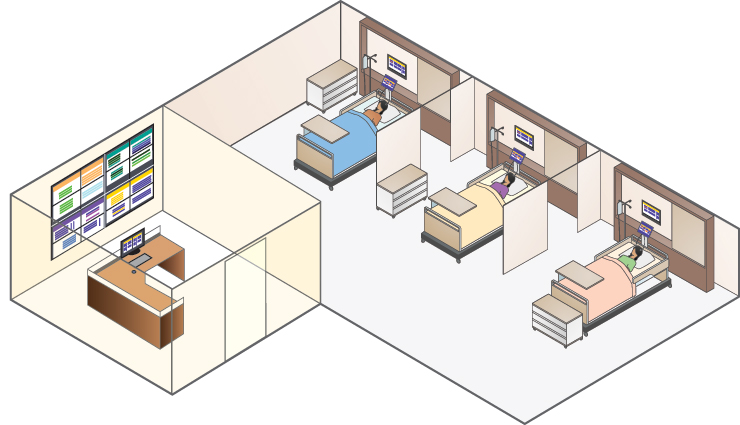Navigation |
HealthcareSleep laboratories There are many people that suffer from sleep disorders. These disorders often result in daytime sleepiness, affecting a patient's quality of life considerably.Sleep laboratories are a possible means to examine and help these patients. They are medical institutions for the purpose of studying sleep behaviour, with specially equipped patient rooms monitored from a centrally located control room which houses the monitoring and recording equipment. All through the night various bodily functions such as respiration, eye movement, brainwaves, muscle tension and oxygen saturation of the blood are recorded and documented. Based on these measurements, an accurate profile of the individual sleep stages, such as awake state, rapid eye movement (REM sleep) and non-rapid eye movement (NREM or non-REM sleep), can be prepared the next morning. From this profile, inferences can be drawn concerning the quality of sleep and possible factors that may be affecting it detrimentally.  KVM extension and switching in sleep labsDuring a sleep study, laboratory staff are stationed at the control room and continuously monitor each patient. The patient information converges on a monitor at this central location. With the aid of KVM extender technology, data from the test equipment in the individual bedrooms is transmitted directly to the control room. For example, the values of the measured brain activity or the oxygen saturation levels of the blood are transmitted from the KVM transmitter to the receiver. If necessary, monitoring can be supplemented with acoustic signals. The KVM switching function allows the sleep laboratory staff to directly switch to the computer that is monitoring a certain patient and conduct a more detailed analysis of the measured parameters. 4-in-1 video scalers - monitor four patients on one display.To display the results clearly, 4-in-1 video scalers facilitate the graphical arrangement of four patient data sets on a single large monitor. Via KVM extension and switching, all analysing equipment can be freely arranged on the display. If more than four video signals should be monitored simultaneously, cascading video scalers provides the option of displaying up to 16 signals. The display can also be mirrored to other rooms. 
Other settings in medical environments can benefit from KVM extension and switching technology as well. Visit the sections on patient monitoring and laboratory automation for more information. Featured Products |